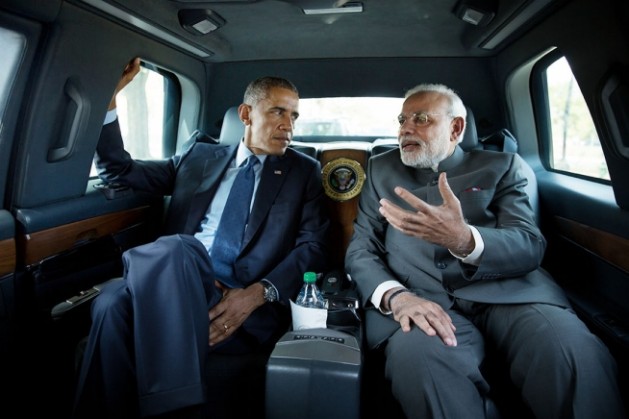India garnered international attention this week for its climate action.
As President Barack Obama visited the country at Prime Minister Narendra Modi’s invitation, the two leaders announced a new US-India agreement on clean energy and climate change.
The agreement will help turn India’s bold renewable energy targets into reality, IPS reported.
Rather than relying on one major plank, the collaboration is a comprehensive set of actions that, taken together, represent a substantial step in advancing low-carbon development in India while also promoting economic growth and expanding energy access.
This agreement comes just two months after the US-China climate agreement.
While expectations for the two agreements were quite different — India’s per capita emissions are a fraction of those from China and the United States, and India is in a very different phase of economic development — Modi’s commitments are significant steps that will help build even further momentum for a new international climate agreement.
Modi’s new government has made a significant commitment to sustainable growth in the past several months, setting a goal of 100 gigawatts (GW) of solar power capacity by 2022 and considering a new target of 60 GW in wind energy capacity.
The Indian government has also created a new initiative to develop 100 “smart cities” across the country, aimed at building more sustainable, livable urban areas.
Solar Capacity Goal
Building on India’s 100 GW solar capacity goal, Modi announced India’s intention to increase the overall share of renewable energy in the nation’s electricity supply.
Setting a percentage of overall energy consumption that will come from renewables cannot only help India reduce emissions, it can also play a key role in expanding energy access.
Clean Energy Finance
Given that the entire world’s installed solar capacity in 2013 was 140 GW, India’s plan to reach 100 GW by 2022 is nothing short of ambitious.
The Modi government estimates that scaling up its 2022 solar target from 20 GW to 100 GW will save 165 million tons of carbon dioxide a year, the equivalent emissions of about 23 million American households’ annual electricity use.
The cost of premature deaths from air pollution in the country is already 6 percent of GDP, and it’s poised to worsen as the urban population increases from 380 million to 600 million over the next 15 years.
The US-India plan to work with the US Environmental Protection Agency’s AIR Now-International Program can help cut back on harmful urban air pollution, improve human health and reduce greenhouse gas emissions.


